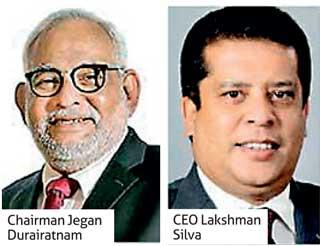09 Aug 2021 - {{hitsCtrl.values.hits}}
DFCC Bank PLC accelerated its loan growth in the three months ended in June (2Q21), but uncertainties related to the virus resurgence prompted the bank to set aside higher provisions for possible loan defaults while the other expenses rose as the bank provided transport to its staff amid restrictions on public transport was in place, taking a dent on the earnings.
 The development lender-turned commercial bank reported a net interest income of Rs.2.93 billion in the April - June quarter, down 1 percent from the same period in 2020 as the decline in lending rates outstripped the decline in the deposit rates.
The development lender-turned commercial bank reported a net interest income of Rs.2.93 billion in the April - June quarter, down 1 percent from the same period in 2020 as the decline in lending rates outstripped the decline in the deposit rates.
This compressed the interest margin of the bank by little to 2.37 percent by June end from 2.53 percent at the beginning of the year. However the management expects that the gradual re-pricing of its deposits under lower interest rates should support the margins and thereby the net interest incomes in the period ahead. “With the repricing of the deposits to reflect the current market rates, the bank will be able to improve net interest margins in the coming months,” the bank said in an earnings release.
The bank extended its gross loans and advances book by Rs.18.4 billion in the three months to June, bringing the total loans extended during the first half of the year to Rs.31.7 billion, a figure which translated into 10 percent year-to-date growth. The bank’s reported gross non-performing loans ratio slightly decreased to 5.46 percent from 5.56 percent at the start of the year, but the lender provided more for possible future losses expecting challenges to borrowers from the restrictions on their business and other incomes which might make their loan servicing irregular.
The bank provided Rs.1.07 billion on possible loan losses during the quarter, up 31 percent from the same period in 2020. The bank also made substantial provisions on other financial assets which perhaps consist of dollar denominated government securities as such provisions that rose to Rs. 232.8 million from Rs.70.4 million a year ago.
The bank said its operating expenses rose mainly due to the transport provided to its staff due to restrictions on public transport and other expenses incurred to ensure safety of its staff and the bank premises from the virus.
As a result other expenses rose by 27 percent to Rs.820.5 million, taking the total operating expenses of the bank to Rs.2.09 billion, up 16 percent from the same period last year.
The bank reported earnings of Rs.1.98 a share or Rs.623.8 million for the April - June quarter compared to Rs.2.59 a share or Rs.766.9 million in the corresponding period in 2020, translating into a 19 percent decline. The June profits were also supported by the robust fee incomes which logged a growth of 81 percent to Rs.647.3 million. During the quarter, the bank also booked a gain of Rs.887.5 million from the sale of government securities, further supporting its bottom-line.
During the quarter the bank raised deposits of Rs.14.1 billion, bringing the total deposits raised during the first six months to Rs.16.2 billion. The bank in early July announced the raising of US$ 150 million from United States International Development Finance Corporation, on-lend for small and medium scale businesses and women-led enterprises as the bank continues to access local and foreign currency funds to meet its medium to long term lending needs.
Fitch Ratings, last week affirming the bank’s rating at A+ with a Stable outlook said they expected the bank to bolster its Tier I capital to sustain its lending growth in the medium term. At present its capital ratios and liquidity remains above minimum levels and sufficient enough to support its lending drive.
The government controls 31.61 percent stake in DFCC Bank through Bank of Ceylon, Sri Lanka Insurance Corporation, Employees Provident Fund and the Trust Fund while Hatton National Bank holds 14.91 percent stake being its single largest shareholder.
18 Nov 2024 4 minute ago
18 Nov 2024 1 hours ago
18 Nov 2024 1 hours ago
18 Nov 2024 3 hours ago
18 Nov 2024 7 hours ago